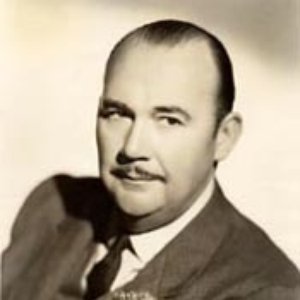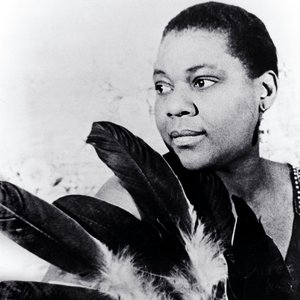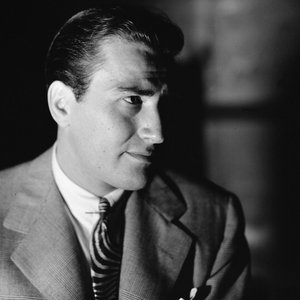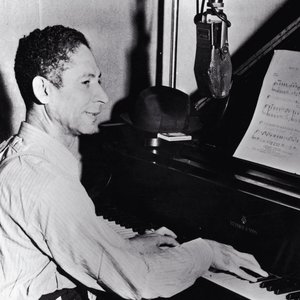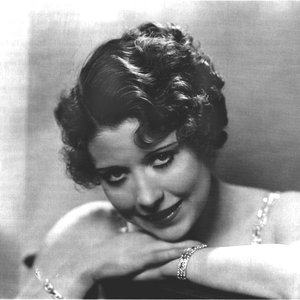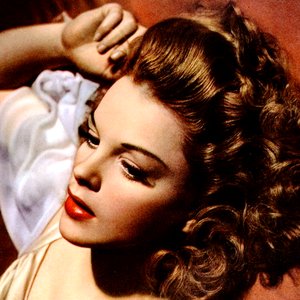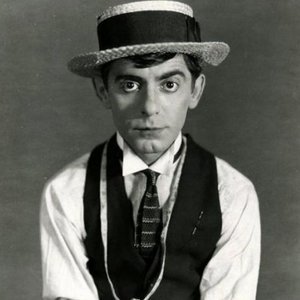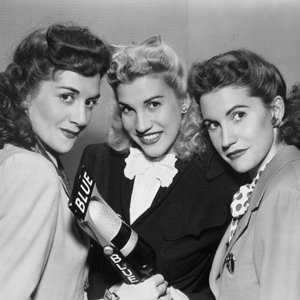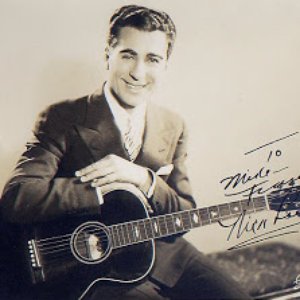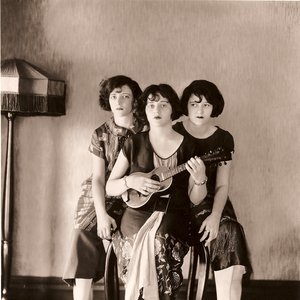Biography
-
Born
26 May 1886
-
Born In
Tauragės Apskritis, Lithuania
-
Died
23 October 1950 (aged 64)
Asa "Al Jolson" Yoelson (born to Jewish immigrants Moshe Reuben Yoelson and Naomi Etta Cantor - the original family name was Hesselson - in Seredžius, Lithuania on May 26, 1885 or 1886, and died in San Francisco, California on October 23, 1950) was an American singer. He was one of the most popular entertainers of the first half of the 20th century.
Early life and career
The son of the Rabbi of the Talmud Torah Synagogue (now Ohev Sholom Talmud Torah) in Washington, D.C., Jolson became a popular singer in New York City in 1898, and gradually developed the key elements of his performance: blackface makeup; exuberant gestures; operatic-style singing; whistling and directly addressing his audience.
By 1911, he had parlayed a supporting appearance in the Broadway musical La Belle Paree into a starring role. He began recording and was soon internationally famous for his extraordinary stage presence and personal rapport with audiences. His Broadway career is unmatched for length and popularity, having spanned close to 30 years (1911-1940). Audiences shouted, pleaded, and often would not allow the show to proceed, such was the power of Jolson's presence. At one performance in Boston, the usual staid and conservative audience stopped the show for 45 minutes. He was said to have had an "electric" personality, along with the ability to make each member of the audience believe that he was singing only to them. However, he is best known today for his appearance in one of the first "talkies" The Jazz Singer, the first feature film with sound to enjoy wide commercial success, in 1927. In The Jazz Singer Jolson performed the song "Mammy" in blackface. In truth, Jolson's singing was never jazz, indeed his style remained forever rooted in the vaudeville stage at the turn of 20th century.
Jolson is the first music artist to sell over 10 million records. While no official Billboard magazine chart existed during Jolson's career, their staff archivist Joel Whitburn used a variety of sources such as Talking Machine World's list of top-selling recordings, and Billboard's own sheet music and vaudeville charts to estimate the hits of 1890-1954. By his reckoning, Jolson had the equivalent of 23 No. 1 hits, the 4th-highest total ever, trailing only Bing Crosby, Paul Whiteman, and Guy Lombardo. Whitburn calculates that Jolson topped one chart or another for 114 weeks.
Among the many songs popularized by Jolson were "You Made Me Love You," "Rock-a-Bye Your Baby With A Dixie Melody," "Swanee" (songwriter George Gershwin's first success), "April Showers," "Toot, Toot, Tootsie, Goodbye," "California, Here I Come," "When the Red, Red Robin Comes Bob-Bob-Bobbin' Along," "Sonny Boy" and "Avalon."
Jolson was a political and economic conservative, supporting Calvin Coolidge for president of the United States in 1924 (with the ditty "Keep Cool with Coolidge") unlike most other Jews in the arts, who supported the losing Democratic candidate, John William Davis.
Jolson was married to actress/dancer Ruby Keeler from 1928 to 1940, when they divorced. The couple had adopted a son, Al Jolson Jr., during their marriage, but when he was 14 the boy changed his name to Peter Lowe after his mother's second husband, John Lowe.
After leaving the Broadway stage, Jolson starred on radio. The Al Jolson Show aired 1933-1939, 1942-1943, and 1947-1949, and these shows were typically rated in the top ten. Jolson continued performing until his death in 1950.
The Jolson story
After the success of Warner Bros. film Yankee Doodle Dandy about George M. Cohan, Hollywood columnist Sidney Skolsky believed that a smiliar film could be made about Al Jolson – and he knew just where to pitch the project. Harry Cohn may have seemed to a lot of people in Hollywood like a crude, loud vulgarian, but he had one soft spot: he loved the music of Al Jolson.
Skolsky pitched the idea of an Al Jolson biopic and Cohn agreed to it. Directed by Alfred E. Green (best known today for the pre-Code masterpiece Baby Face, The Jolson Story is one of the most entertaining of the musical biopics of that era – an era that included Yankee Doodle Dandy, Till the Clouds Roll By, Words and Music and Three Little Words. With Jolson providing almost all the vocals, and actor Larry Parks playing Jolson, The Jolson Story was released in 1946, and became one of the biggest hits of the year. Parks received an Academy Award nomination for Best Actor, and the film became one of the highest grossing films of the year.
"The Jolson Story," and its 1949 sequel "Jolson Sings Again," led to a whole new generation who became enthralled with Jolson's voice and charisma. Jolson, who had been a popular guest star on radio since its earliest days, now had his own show, hosting the "Kraft Music Hall" from 1947-1949, with Oscar Levant as a sardonic piano-playing sidekick. Despite such singers as Frank Sinatra, Bing Crosby, and Perry Como being in their primes, Jolson was voted the "Most Popular Male Vocalist" in 1948 by a Variety poll. The next year, Jolson was named Personality of the Year by the Variety Clubs of America. When Jolson appeared on Bing Crosby's radio show, he attributed his receiving the award to his being the only singer not to make a record of Mule Train, which had been a widely covered hit of that year (four different versions, one of them by Crosby, had made the top ten on the charts).
Jolson joked that he'd tried to sing the hit song. "I got the clippetys all right, but I can't clop like I used to."
Jolson's legacy is considered by many to be severely neglected today because of his use of stage blackface, at the time a theatrical convention used by many performers (both white and black), but today viewed by many as racially insensitive. Jolson was billed as "The World's Greatest Entertainer," which is how many of the greatest stars (including Bing Crosby, Frank Sinatra, Judy Garland, Elvis Presley, Mick Jagger, Rod Stewart, Jackie Wilson) referred to him. Charles Chaplin wrote in his Autobiography that he was one of the most electrifying entertainers he had ever seen. A life-long devotion to entertaining American servicemen (he first sang for servicemen of the Spanish-American War as a boy in Washington, D.C.) led Jolson, against the advice of his doctors, to entertain troops in Korea in 1950 when his heart began to fail.
Death
Jolson died on October 23, 1950, in San Francisco at a card game, at the age of 64, apparently of a heart attack, and was interred in the Hillside Memorial Park Cemetery in Culver City, California, where a statue of Jolson beckons visitors to his crypt. On the day he died, Broadway turned off its lights for 10 minutes in Jolson's honor.
Al Jolson has three stars on the Hollywood Walk of Fame:
1. For his contribution to the motion picture industry at 6622 Hollywood Blvd.;
2. For his contribution to the recording industry at 1716 Vine St.;
3. For his contribution to the radio industry at 6750 Hollywood Blvd.
Forty-four years after Jolson's death, the United States Postal Service acknowledged his contribution by issuing a postage stamp in his honor. The 29-cent stamp was unveiled by Erle Jolson Krasna, Jolson's fourth wife, at a ceremony in New York City's Lincoln Center on September 1, 1994. This stamp was one of a series honoring popular American singers, which included Bing Crosby, Nat King Cole, Ethel Merman, and Ethel Waters. Al Jolson is one of Mr. Burns' (from The Simpsons) favorite actors - he still believes that he is alive.
Jolson's song I'm Sitting on Top of the World was played during the opening montage of 1930's New York City in the 2005 remake of King Kong.
In August of 2006, Al Jolson had a street in New York named after him.
Artist descriptions on Last.fm are editable by everyone. Feel free to contribute!
All user-contributed text on this page is available under the Creative Commons Attribution-ShareAlike License; additional terms may apply.

